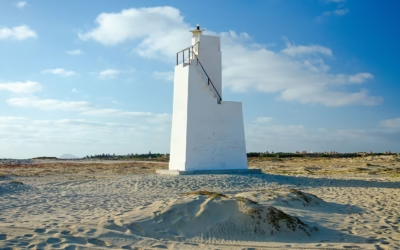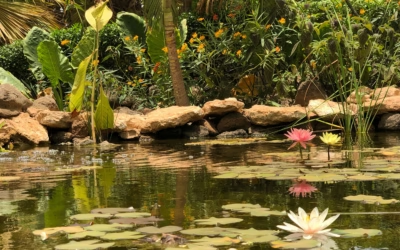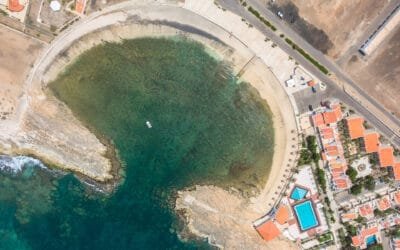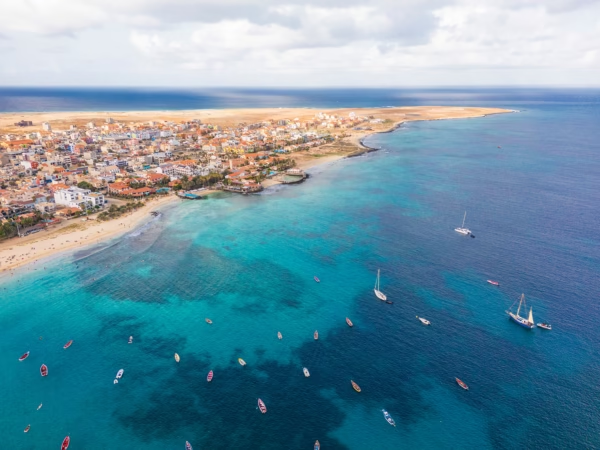Our Lady of Compassion Chapel in Pedra de Lume
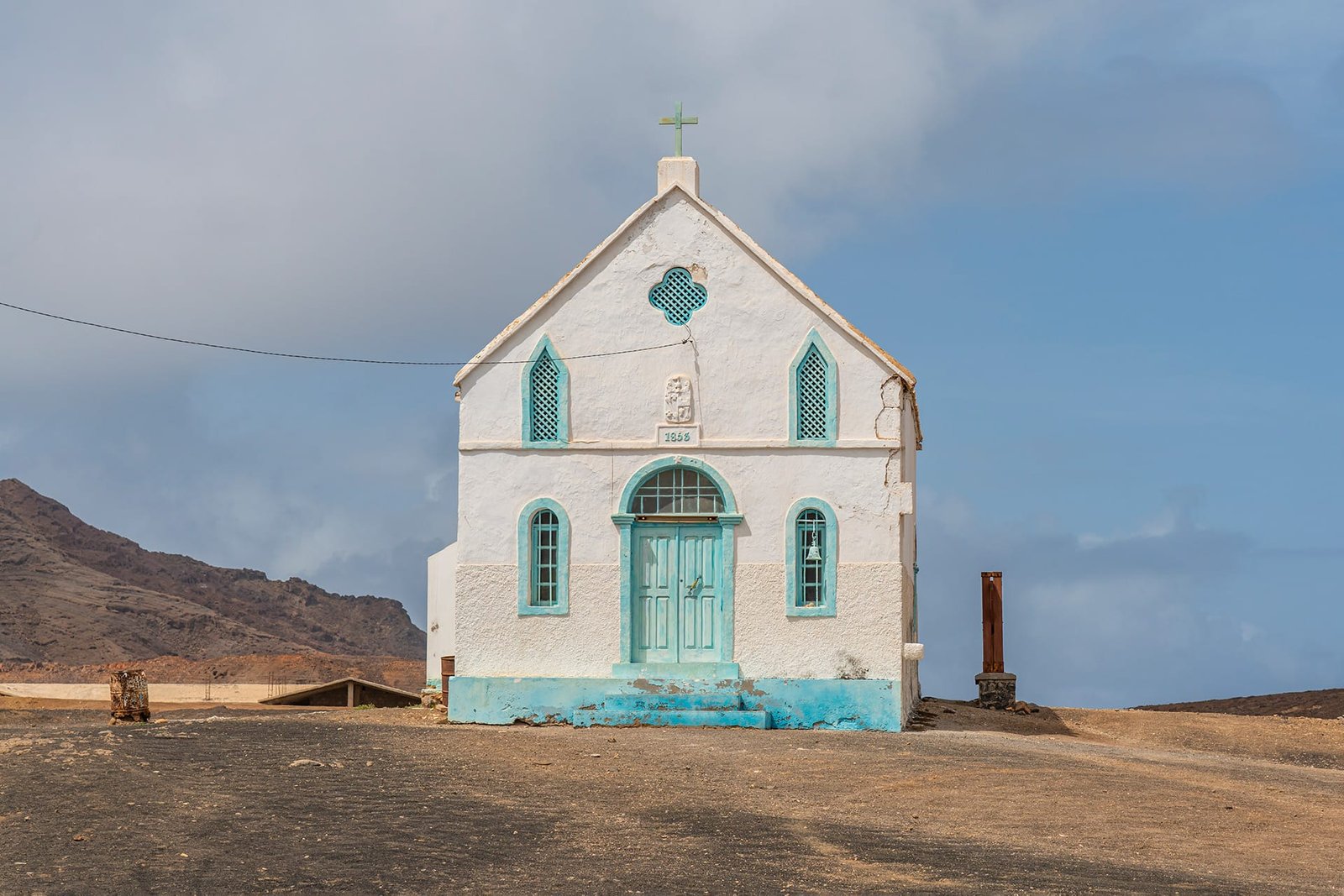
On the way to Salinas from Pedra de Lume stands a lovely little church painted white and blue. It’s the Capela de Nossa Senhora da Piedade, Our Lady of Compassion Chapel, built in 1853 by Aniceto António Ferreira Martins in memory of his parents, Manuel António Martins (the founder of Pedra de Lume) and Josepha Ferreira Martins, and it’s a historical heritage as one of the oldest sacral buildings on the island. Its structure is an example of Portuguese colonial architecture, and therefore it’s worth a quick look.
The white-blue chapel looks beautiful against the harsh, brown, desert-like landscape and is a pretty sight.
Google Maps: Igreja Pedra de Lume
Tripadvisor: Lady Compassion Chapel
Address: Q474+HVM, Pedra Lume
Chapel’s Origins: A Memorial Anchored in Faith and Family
The chapel was commissioned in 1853 by Aniceto António Ferreira Martins, heir to the fortunes of his father, Manuel António Martins, and in memory of both his parents. Manuel Martins first tapped the salt veins of Pedra de Lume in 1796, effectively founding the settlement with what became a booming salt industry. Two generations later, Aniceto built this chapel for the salt labourers and the local community — a lasting tribute in stone and tile to those who shaped the place.
Chapel’s Architecture: Modesty Amid Monumentality
Painted white with blue trim, the chapel’s simple form echoes the Portuguese neoclassical design of the time: balanced proportions, unadorned walls, and a modest entrance crowned by a triangular pediment. The blue detailing, common in Cape Verde’s church architecture, softens the hard lines of its structure without diminishing its presence.
Inside, the space is small — designed for an intimate gathering. Though plain today, the altar likely once held carved and gilded features typical of Portuguese sacristies. Light enters through narrow windows, forming a quiet halo that speaks more of contemplation than congregation.
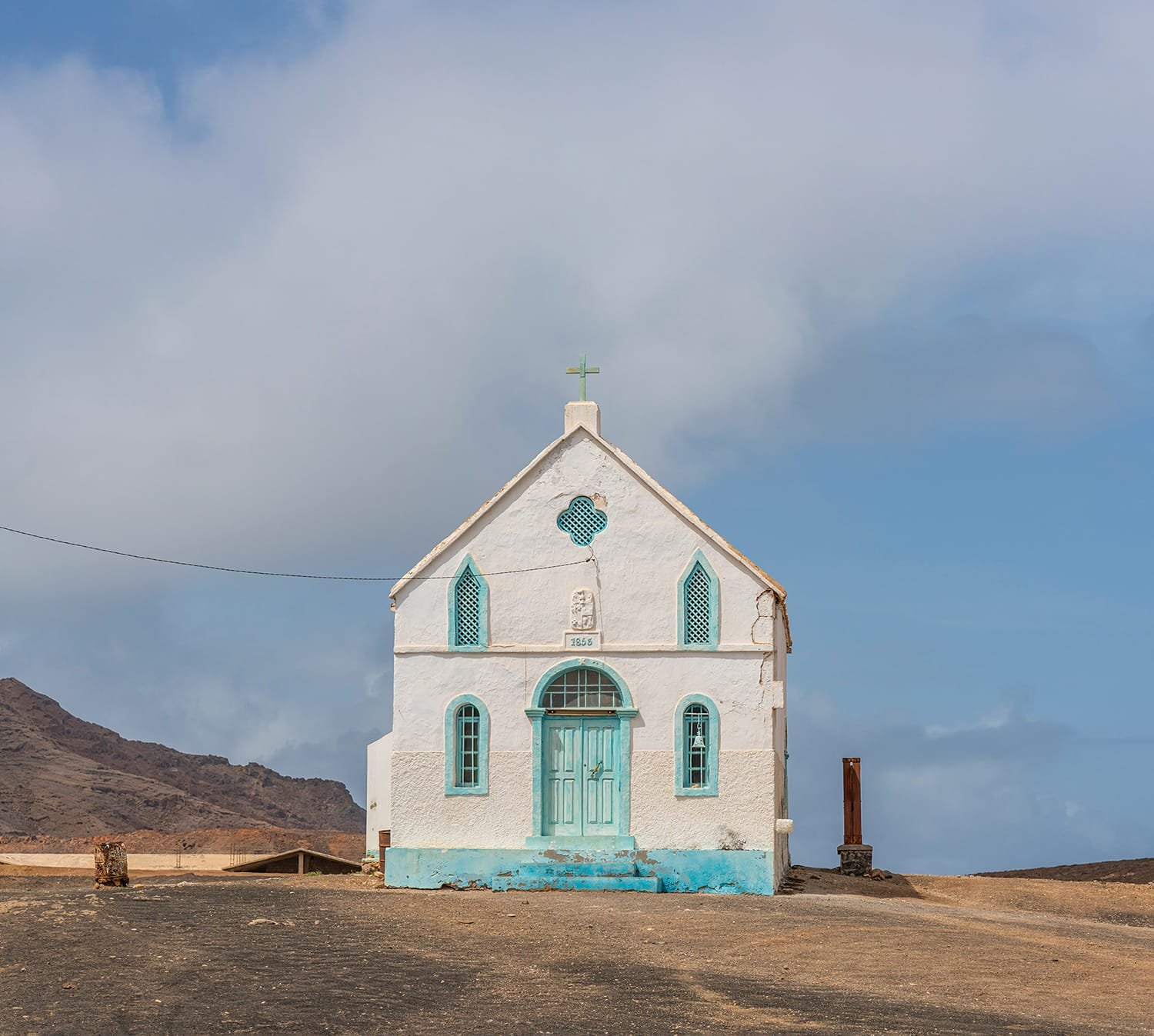
Continuity and Care: Present-day Relevance
Today, the chapel is neither abandoned nor opulent. Locals maintain its exterior. Occasionally, a candle or flower appears at the entrance. While not open daily, it occasionally hosts prayer services, especially during annual religious festivals. Tourists and salt visitors pause, lighting a candle or stepping inside in silence. Its presence reinforces a connection to the crater’s industrial past and a faith shaped by salt and sea.
Nearby, the Farol de Pedra de Lume (the 1855 lighthouse) underscores a period when human footholds — economic and spiritual — marked this raw landscape. Together, they stand as markers of maritime and cultural endurance.
The Chapel: A Landmark of Labour, Memory, and Faith
What makes this chapel compelling is not grandeur, but resilience. Against a backdrop of salt evaporation and windy crater rims, it shows a different kind of construction — one built on devotion and remembrance. It connects a family’s legacy, an enterprise of the state and industry, and the lived experience of labourers.
In a landscape shaped by excavation and enterprise, the chapel offers stillness — a focal point where faith and history converge, where simple architecture carries complex meaning. It reminds us that places endure not only through physical labour, but through rituals of remembrance and quiet repetition.
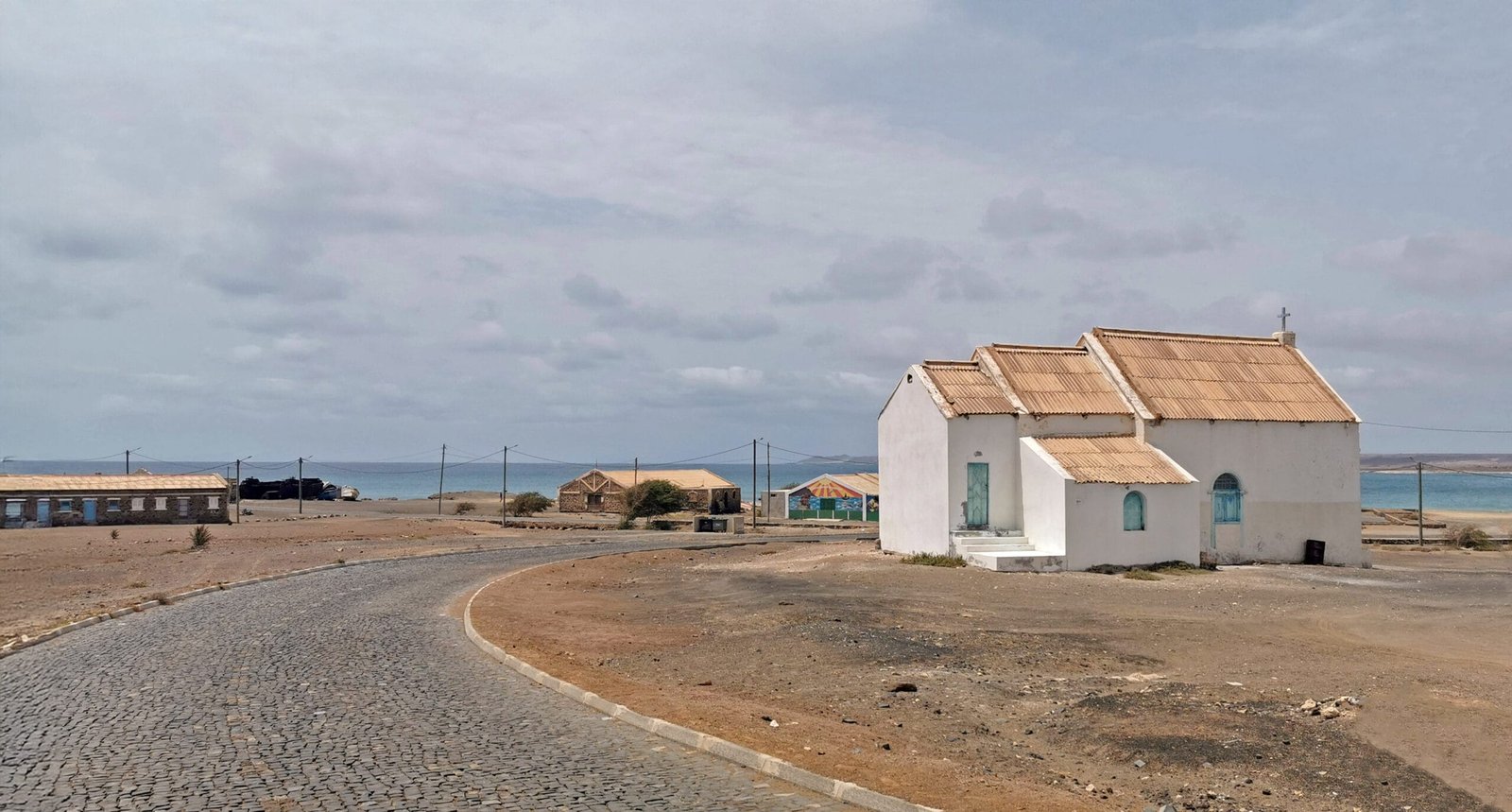
Life, Salt, and the Crater Today
Now largely dormant, the salinas serve tourists more than traders. Visitors descend a cobbled path from the old crater rim, passing a modest chapel painted in white and blue (erected in 1853), and two stone piers of the once-bustling cable-lift. At the crater floor, saunas of sun and wind coax the brine into dazzling salt flats.
Floaters in the central lake experience near‑magical buoyancy — salt concentration often measured between 27% and 30%, approximately 26 times stronger than ocean water. Many believe the mineral-rich mud to have therapeutic effects and swear by the slow glide along its edges, though a gentle word of caution: the water is harsh on the eyes.
Emerging from this saline capsule, visitors rinse under a freshwater shower (€1), following a ritual that parallels the layers of history — volcanic birth, colonial enterprise, industrial boom, and restorative leisure.
Bibliography / Sources
-
Pedra de Lume on Wikipedia (history of settlement and salt industry);
-
“Capela de Nossa Senhora da Piedade / Lady Compassion Chapel,” visitor review, TripAdvisor;
-
Pedra de Lume in celebration of Nossa Senhora de Piedade, Africa-Press.net;
-
Farol de Pedra de Lume on Wikipedia;
-
Architecture of Cape Verde on Wikipedia;
-
Field visits and oral accounts in Pedra de Lume, 2023–2025;
- Lady Compassion Chapel – Pedra de Lume on TripAdvisor;
- Pedra de Lume on Wikipedia, The Free Encyclopedia (EN);
- Igreja Pedra de Lume on Google Maps.
